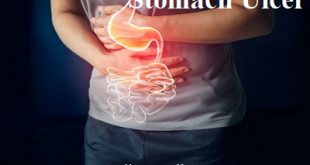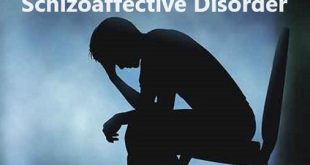Definition
Septic bursitis (infectious bursitis) is an infection of the bursae, the small sacs of fluid that cushion and lubricate an area where tissues-including bone, tendon, ligament, muscle, or skin-rub against one another. Common sites of septic bursitis are the tips of the elbows and the kneecaps. People who repeat the same movement over and over or who put continued pressure on a joint in their jobs, sports, or daily activities have a greater chance of getting bursitis.
Septic Bursitis in the elbow
Bursitis of Knee
Pathophysiology of septic bursitis
Inflammation of the bursa causes synovial cells to multiply and thereby increases collagen formation and fluid production. A more permeable capillary membrane allows entrance of high protein fluid.
The bursal lining may be replaced by granulation tissue followed by fibrous tissue. The bursa becomes filled with fluid, which is often rich in fibrin, and the fluid can become hemorrhagic.
In septic arthritis, local trauma usually causes inoculation of bacteria into the bursa, which triggers the inflammatory process.
Symptoms
It may be hard to tell the difference between inflammation in a bursa (bursitis) and infection in a bursa (septic bursitis). In addition to the usual symptoms of bursitis, such as pain in the affected area, septic bursitis has hallmark signs that you can easily identify, including:
- A high fever with a temperature of 38 degrees Celsius (100.4 degrees Fahrenheit) or above
- Cold, shivering feel
- A deep skin infection, such as cellulitis
- The broken skin over the affected area
Complications of septic bursitis
Complications of Septic Bursitis include:
- Chronic pain in the joint
- Difficulty walking or moving the joint
Causes
Bursitis is commonly caused by:
- Overuse and repeated movements. These can include daily activities such as using tools, gardening, cooking, cleaning, and typing at a keyboard.
- Long periods of pressure on an area. For example, carpet layers, roofers, or gardeners who work on their knees all day can develop bursitis over the kneecap.
- Aging, which can cause the bursa to break down over time.
- Sudden injury, such as a blow to the elbow.
- Bursitis can also be caused by other problems, such as arthritis or infection (septic bursitis).
Risk Factors of septic bursitis
The risk factors for this condition depends on the target area.
- Eating Habits: Foods with high levels of calcium can cause excess calcium in a person’s bones, which could then cause bursitis. Osteoarthritis and obesity are also among the risk factors.
- Injuries: Whenever you perform physical activities, it is important to avoid injuries around the joints. The bursae are very sensitive parts of the body that when injured can cause a lot of pain in the joints.
- Lack of Exercise: Exercise strengthens the muscles and bones of a person. People who do not exercise slowly make their bodies weak, especially around the joint and muscle areas. These people are more prone to suffer from bursitis.
- Taking Part in Certain Sports: A number of sporting activities should be done with a lot of care. Athletes are likely to suffer from inflammation of the inner part of the knee, also known as anserine bursitis.
- Posture: Sitting or standing behaviors can lead to bursitis. When one sits for a long time with the same posture, it strains the hip joints and can cause bursitis.
Diagnosis and Test
History: The doctor will usually take a detailed history of the onset of symptoms and will want to know what movement or activity makes you feel more or less pain. You will need to report other medical problems you may have.
Fluid removal: The doctor may remove fluid from the bursa with a needle and send it to the lab for analysis. This analysis will help determine if the bursitis is due to an infection or rheumatoid condition or trauma). Bursitis in the knee and elbow are especially prone to infection.
X-rays: They are usually not helpful, but the doctor may get them if any other disease is suspected such as a fracture or dislocation. MRI and CT scans are obtained only to exclude other causes.
Blood testing: The doctor may order blood tests to rule out infection or other conditions such as rheumatoid arthritis.
Treatment and Medications
Bursitis treatment focuses on relieving inflammation and pain, treating the infection (if present), and preventing complications and future recurrence.
Rarely, surgery is required to remove all or part of the affected bursa.
Medication
In most cases, non-steroidal anti-inflammatory drugs (NSAIDs) can help relieve pain and inflammation. NSAIDs include ibuprofen (sample brand names: Advil, Motrin) and naproxen
A glucocorticoid (steroid) injection can also help with inflammation. This is more often used when the affected area is deep under the skin. Septic bursitis requires drainage of the infected fluid and antibiotics to treat the underlying infection.
Septic bursitis is treated with antibiotics. The choice of which antibiotic to use, and for how long, is based on the type and severity of the infection. For mild cases, a few weeks of oral antibiotics may be enough; for more severe infection, intravenous (IV) antibiotics (given in the hospital) may be required.
It is also often necessary to drain infected fluid using a needle. This is done in a doctor’s office, usually several times, until the infection has resolved.
Draining using a Needle
Protecting the joints – It is important to protect the affected joints in order to help the bursae to heal, and to prevent the septic bursitis from getting worse or recurring. Examples of joint protection include:
- Avoiding or modifying activities that cause pain
- The use of pads or cushions for people who have to kneel or sit frequently
- Modifying footwear to reduce pressure on the back of the heel (eg, cutting a “V”-shaped groove into the back of a shoe; using a pad inside the shoe to lift the heel)
- Custom-fitted devices worn over the elbows to protect them and prevent fluid from building up again
Home Remedies
- Ice can help relieve pain, particularly for bursitis affecting superficial areas like the elbow, kneecap, and heel. Heat (eg, a heating pad) may be more effective for deeper forms of bursitis, such as the hip, shoulder, or inner knee.
- In many cases, physical therapy can help treat symptoms of bursitis and prevent future recurrence. The optimal exercises depend on the type and severity of bursitis but may involve stretching, strengthening, or working to improve (and maintain) range of motion.
Prevention of septic bursitis
- Warming up before strenuous exercise and cooling down afterward is the most effective way to avoid bursitis and other strains affecting the bones, muscles, and ligaments.
- Avoid activities that aggravate the problem. Rest the affected area after activity. Cushion your joints to avoid prolonged pressure and trauma.
- Lifting properly. Bend your knees when you lift. Failing to do so puts extra stress on the bursae in your hips.
- Wheeling heavy loads. Carrying heavy loads puts stress on the bursae in your shoulders. Use a dolly or a wheeled cart instead.
- Taking frequent breaks. Alternate repetitive tasks with rest or other activities.
- Maintaining a healthy weight. Being overweight places more stress on your joints.
- Strengthening your muscles can help protect your affected joint
 Diseases Treatments Dictionary This is complete solution to read all diseases treatments Which covers Prevention, Causes, Symptoms, Medical Terms, Drugs, Prescription, Natural Remedies with cures and Treatments. Most of the common diseases were listed in names, split with categories.
Diseases Treatments Dictionary This is complete solution to read all diseases treatments Which covers Prevention, Causes, Symptoms, Medical Terms, Drugs, Prescription, Natural Remedies with cures and Treatments. Most of the common diseases were listed in names, split with categories.








I use Turmeric. ginger root and black pepper. Do you have information on that?
Yes, all these come under a natural way of treating Septic bursitis.
I have painful knots in one spot above my elbow. I tried everything. my dr. doesn’t pay attention but now it affect the mobility of shoulders
Kindly consult a good doctor to get diagnosis and treatment.
I am experiencing pain in my left leg kneel cap. I noticed this after an exercise about 50days now. I have taken ibuprofen but no relieve. Kindly advise me on next step
Please consult an orthopedic specialist.